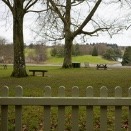how to use a M without light meter
-
Recently Browsing 0 members
- No registered users viewing this page.
-
Similar Content
-
- 34 replies
- 4,458 views
-
- 6 replies
- 340 views
-
- 1 reply
- 149 views
-
- 3 replies
- 220 views
-
- 3 replies
- 240 views
-






Recommended Posts
Join the conversation
You can post now and register later. If you have an account, sign in now to post with your account.
Note: Your post will require moderator approval before it will be visible.